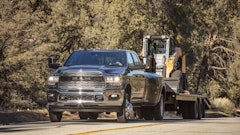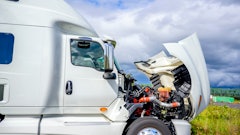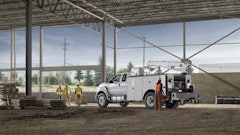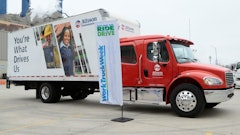
The 2015 Ford Transit delivers as much as 46% better gas mileage than the Ford E-Series and offers van customers more choices and capability. First introduced in Europe in 1965, the Transit goes on sale for the first time at U.S. and Canadian dealerships this summer, eventually replacing the longstanding E-Series van, first sold in 1961 as the Ford Econoline.
The Transit is available in a range of vehicle configurations. Customers can choose from van, wagon, chassis cab and cutaway body styles; three body lengths and two wheelbases for van and wagon, along with three roof heights; and XL and XLT trim levels.
The van is suited for custom storage and shelving systems such as cargo dividers, multi-racks, bulkheads and sliding platforms. An internal ladder-rack system, available as an upfit, helps keep ladders protected from poor weather and away from prying eyes.
Customers can also add smart technology such as available Crew Chief telematics to help track service and mileage costs and MyKey to help encourage safer driving. An available lane-keeping alert system detects lane markings with a forward-facing camera and vibrates the steering wheel to help alert drivers to steer back toward the center of the lane.
Three Fuel-efficient Engine Choices
The Transit comes standard with a 3.7-liter V6 engine, with an available 3.5-liter EcoBoost or 3.2-liter Power Stroke diesel.
When equipped with the 3.5-liter EcoBoost engine, the 2015 Transit low- and medium-roof regular wheelbase wagons get a 14-mpg city/19-mpg highway EPA-estimated rating.* That reflects an improvement of as much as 46% compared with the 10-mpg city/13-mpg highway EPA-estimated rating for the E-Series 6.8-liter V10 premium gas engine. The improved gas mileage translates to fuel savings as high as $1,700 annually, based on EPA data.
Transit low- and medium-roof regular wheelbase wagons with the standard 3.7-liter V6 get a 14-mpg city/19-mpg highway EPA-estimated rating* – up to 19% better than the 13-mpg city/16-mpg EPA-estimated rating for the E-Series 4.6-liter V8 standard gas engine. Fuel savings for customers could be as much as $650 a year, according to EPA estimates.
The 3.5-liter EcoBoost offers a gas engine torque rating of 400 lbs.-ft., making the Transit a suitable choice for those whose work requires extra cargo-hauling capability. The engine’s low-end torque and 310 hp result from its suite of technologies including direct injection and twin turbocharging.
The available 3.2-liter Power Stroke five-cylinder diesel engine provides 90% of its peak torque from 1,500 to 2,750 rpm. Quick-start glow plugs offer fast startups at temperatures as low as -10° F. A variable geometry turbocharger helps deliver quick power.
Transit van delivers as much as 4,650 lbs. of maximum payload capacity. Maximum payload increases at least 600 lbs. across all sizes of Transit vans vs. comparable E-Series vans. Transit delivers a maximum towing capacity of 7,500 lbs.
The standard six-speed SelectShift automatic transmission features selectable tow/haul mode to compensate for grade and load, while also reducing gear hunting when towing or hauling heavy cargo.
A compressed natural gas and liquefied petroleum gas prep package is available on the Transit when equipped with the 3.7-liter V6 engine.
Plenty of Cargo Room
The Transit’s all-new unibody structure makes extensive use of boron steel for weight savings, improved torsional stiffness and long-term durability.
The van offers a gas engine maximum cargo capacity of 487.3 cu. ft. when properly equipped – 75% more than the largest E-Series van. The extended-length wagon model offers cargo storage of 100.5 cu. ft. behind the last row of seats in a 15-passenger version.
High-roof van models offer best-in-class cargo height to make loading easier, and high-roof wagon models deliver best-in-class passenger compartment height, enabling passengers as tall as 6 feet 4 inches to stand upright.
Transit also has a high rear door opening height and an available 270° swing-out rear cargo doors for quick and easy access.
* EPA-estimated rating of 14 mpg city/19 mpg highway/16 mpg combined for all-new 2015 Transit low- and medium-roof regular wheelbase wagon. Actual mileage will vary.



















